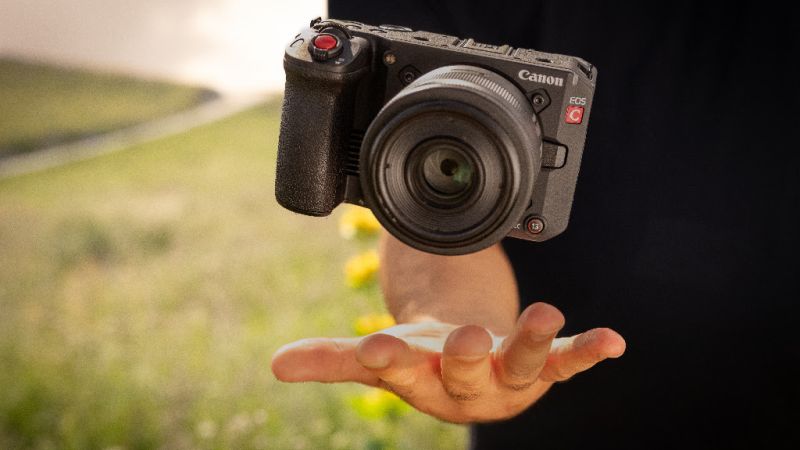Canon has announced the EOS C50, a compact yet powerful addition to its Cinema EOS line, designed for professional videographers and production crews.
The EOS C50 is the smallest camera in the Cinema EOS range to date, but despite its size, Canon says it delivers uncompromising image quality and flexibility.
At its core is a new 7K full-frame CMOS sensor paired with a DIGIC DV 7 processor. The combination allows the camera to record internal RAW video at up to 7K 60P, alongside high frame rate options of 4K 120P and 2K 180P. The sensor also enables the capture of detailed 32-megapixel still photographs, positioning the C50 as a hybrid device for both filmmakers and photographers.
Open gate recording
The EOS C50 is the first Cinema EOS model to support open gate recording, using the entire sensor area for maximum resolution and creative flexibility. This allows footage to be reframed for both horizontal and vertical formats, giving videographers greater scope in post-production.
Canon has also included a Simultaneous Crop Recording function, which enables users to capture a full-frame image and a cropped vertical or square version at the same time — a feature the company says is tailored to the demands of social media and advertising.
Hybrid design and autofocus
In hybrid use, the camera automatically switches between the Cinema EOS video interface and the Canon EOS R stills menu, depending on shooting mode. Autofocus is powered by Canon’s Dual Pixel CMOS AF II, which offers subject detection and tracking for people and animals, including eye selection and fine-tuned control of AF speed.
The lightweight, modular body is designed for rigging flexibility, with multiple mounting points and a detachable handle that includes two XLR audio inputs, control dials, and a zoom rocker for camcorder-style shooting. The EOS C50 can be mounted horizontally or vertically, with its display adjusting accordingly.
Lens and workflow flexibility
The EOS C50 natively supports Canon’s RF lenses, but can also accommodate EF and PL lenses using optional adapters. Connectivity has been expanded to include HDMI OUT, USB-C, MIC input, timecode, and dual card slots for CFexpress and SD media.
Canon has also emphasised workflow integration, with support for livestreaming via UVC/UAC, Wi-Fi file transfer through Canon’s Content Transfer Mobile app, and compatibility with Frame.io Camera to Cloud, allowing proxy files to be uploaded directly from the camera to cloud platforms.
Positioning in the market
Canon says the EOS C50 builds on the success of the EOS R5 C, offering greater flexibility for fast-paced productions without compromising image quality. The launch is accompanied by a series of firmware updates for other Cinema EOS cameras, including the C400, C80, R5 C and C70, introducing features such as open gate RAW recording and improved focus peaking.
With its compact design, 7K capabilities, and cloud-ready workflow, the EOS C50 is being positioned as a new standard for hybrid cinema cameras, appealing to agile film crews and content creators alike.

